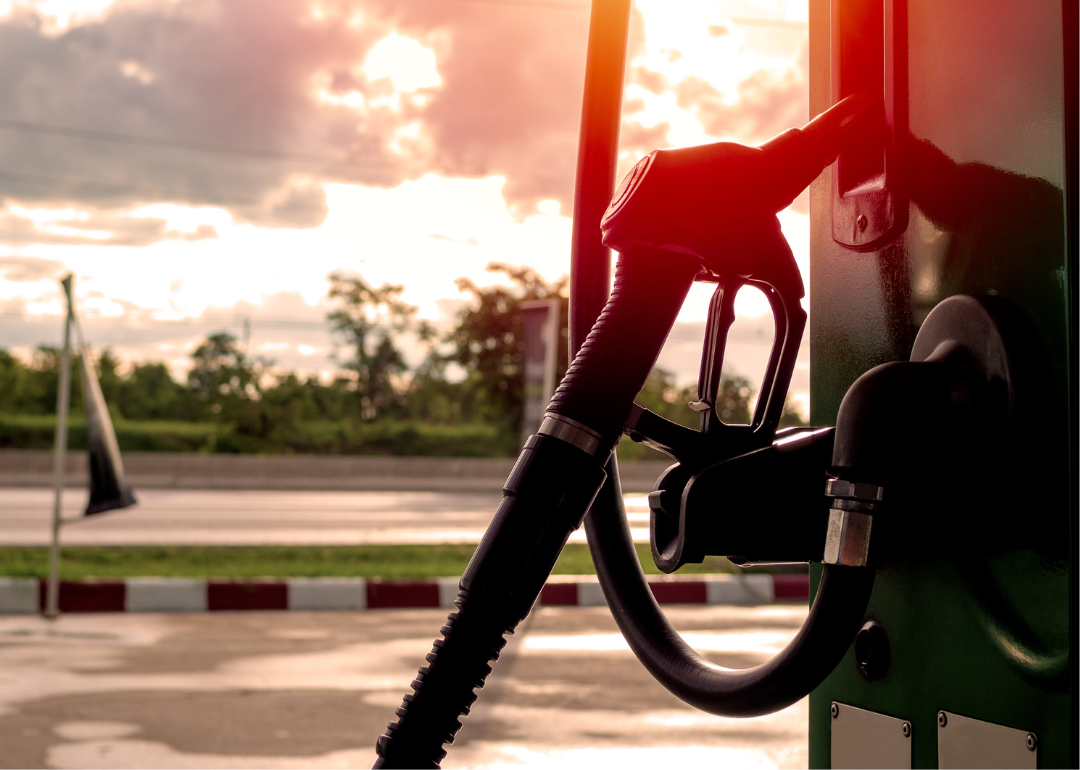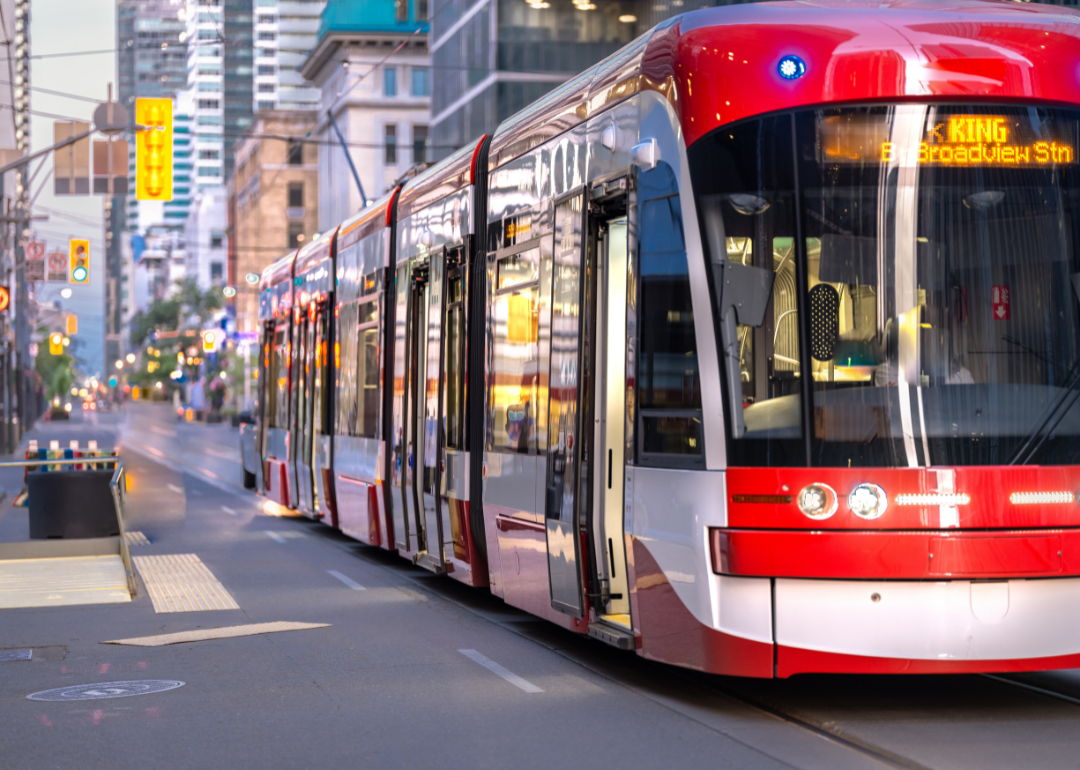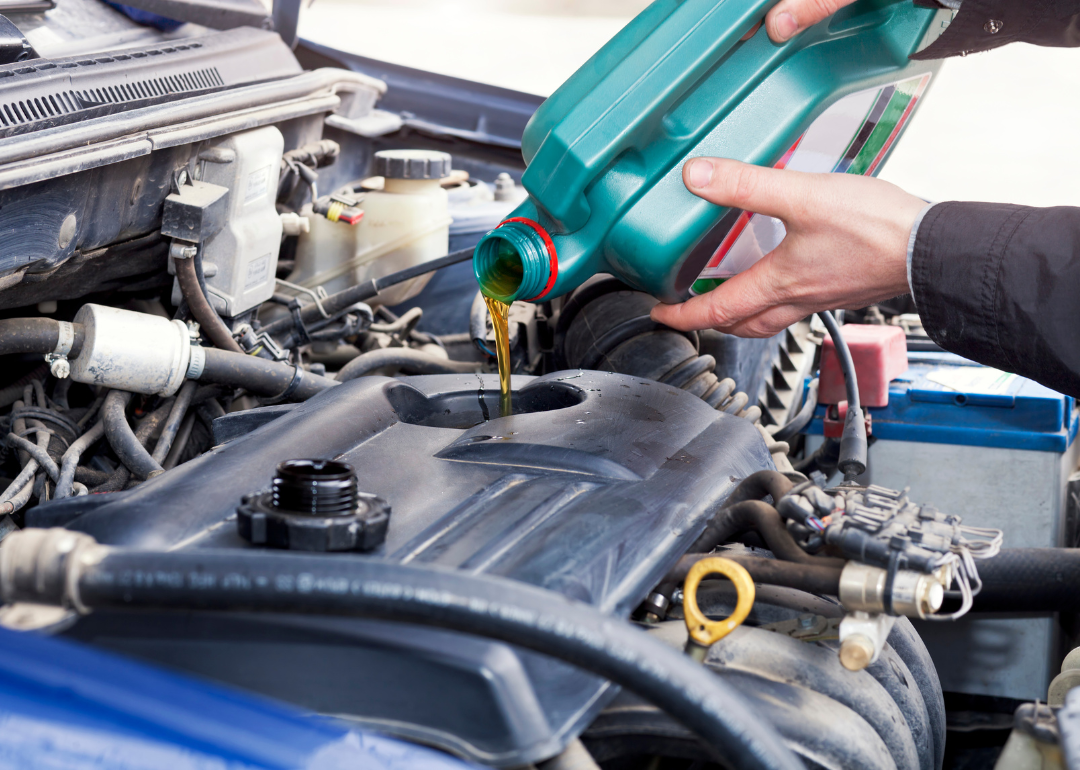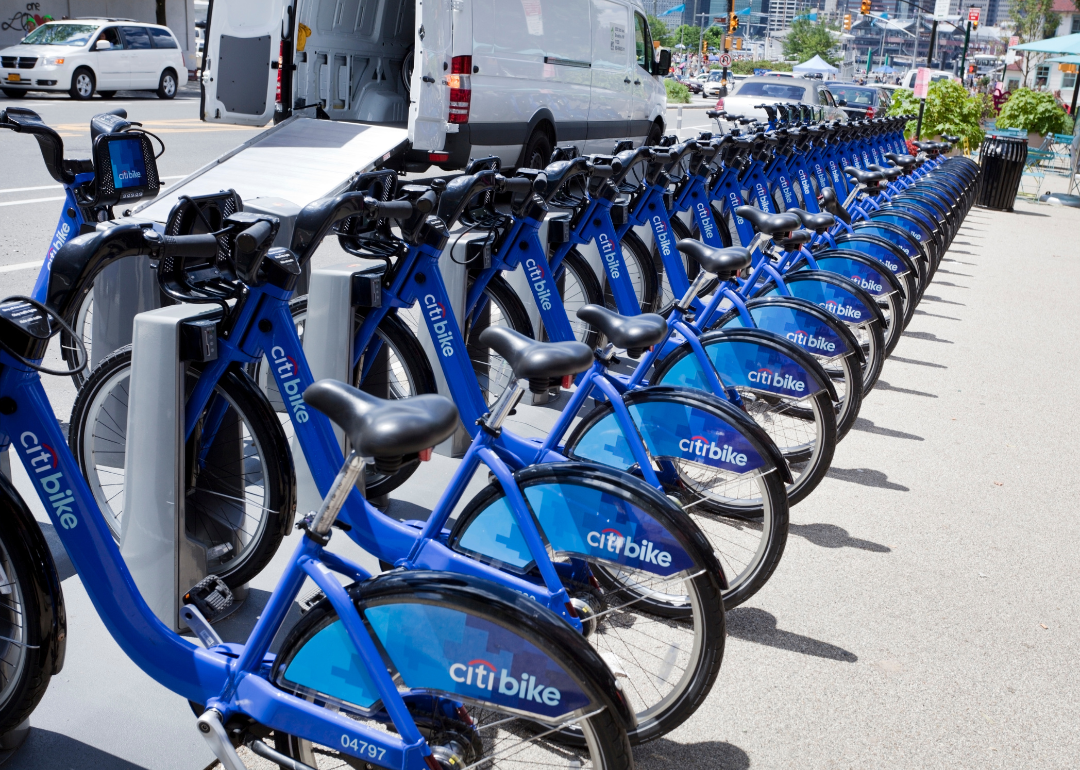Americans spend $179 on fuel each month—here’s how to spend less

Canva
Americans spend $179 on fuel each month—here’s how to spend less
A gas nozzle at a gas station.
Owning a vehicle comes with a whole host of costs—from insurance and maintenance to parking and tolls. And if the past year has proven anything, it’s that another cost associated with vehicle use—namely fuel—can fluctuate wildly, putting further strain on your bank account for an already costly necessity.
CoPilot looked into the Bureau of Labor Statistics’ Consumer Expenditure Surveys to see how much Americans spend on fuel for their vehicles and used sources from insurance companies, transportation fleet managers, and government agencies to determine some ways to lower that expenditure.
On average, Americans spent $179 per month (or $2,148 annually) on gasoline, other fuels, and motor oils in 2021, accounting for around 3% of overall annual expenses. In terms of finding decisive ways to cut that cost, one front-of-mind idea might be to consider an electric vehicle. EVs are gaining in popularity, the major automakers are investing heavily in an electric future, and the government incentivizes most EV buyers.
While switching to a car with better fuel economy, such as a hybrid or fully electric vehicle, can lead to big reductions in monthly fuel expenses, hybrids and EVs often cost more than their gasoline-only counterparts, and the fuel savings may not offset that difference for a number of years. What’s more, the infrastructure EVs depend on for charging remains in something of a developmental stage, making them a limited alternative to gas-powered vehicles—at least for now.
There are approximately 250 million cars and trucks on U.S. roadways; less than 1% are electric. So for those either not in the market for a new vehicle or simply content to stick with the reliability of gasoline-powered travel, the following list offers a wide range of suggestions, best practices, and easy lifestyle adjustments that can reduce the monthly costs associated with fueling a personal vehicle.
![]()

CoPilot
Wealthy households spend more than twice as much on gasoline
Line chart showing the average monthly spend on gasoline from 2011 to 2021 by income quintile. The higher the income, the higher the average spend.
Even as gas prices were at their highest since 2014 (adjusted for inflation), spending on fuel in 2021 increased from 2019 levels by only $54 per year on average. And while the drastic reduction in driving brought on during the height of the COVID-19 pandemic in 2020 had a great impact on fuel spending that year, it does not seem to have extended to significantly changed habits in the following year—driving in 2021 dropped by only 1% when compared with 2019 levels.
Though average spending on fuel in 2021 was high, the lack of an even more dramatic increase due to high gas prices can be attributed mainly to the steady rise in the fuel efficiency of vehicles over the past decade.
Another important consideration raised by this is whether or not the burden of those fuel expenses is felt equally across income levels. Bureau of Labor Statistics data suggests it does not. For those in the lowest income quintile, spending on fuel represented 3.6% of total expenses. The burden decreased for each subsequent income bracket; in the highest quintile, it represented just 2.4% of total costs.
While this disparity might seem minimal when considering the upper limit of the lower quintile’s household earnings is just over $27,000, and the lower limit (or floor) of the highest quintile is $141,000, that 1.2% difference comes starkly into focus.
So while the increase in the fuel economy of newer cars seems to have a relative equalizing force on fuel expenses when taken on average, income disparity implies that those in lower income quintiles do not reap the benefits of those improvements in automotive engineering.

Canva
Consider alternative forms of transportation
A street car, or a bus-like vehicle for public transit, in downtown Toronto.
From their walkability to the accessibility and affordability of public transit, urban areas such as cities offer residents, especially those living in city centers, alternatives to using personal vehicles to get around. This isn’t just beneficial to their health and that of the environment; it also helps people reduce fuel costs.
Overall, those who live in urban areas spent $3,303 less on transportation than those in rural areas in 2021. Fuel expenses accounted for roughly 13% of transportation costs, meaning even those who owned cars in urban areas spent on average $39 less per month on fuel than those in rural settings.
This is not to say, however, that rural or micropolitan areas cannot take advantage of alternative forms of transportation. Small towns across the U.S. have begun to see the value in investing in bike-share programs, using its infrastructure funding to add bike-protected lanes on their streets. This is especially true in smaller college towns, where foot and bike traffic tends to be high.
So whether it’s via bike, scooter, or sneakers, tackling short-distance trips by means other than your vehicle can translate to more cash in your pocket.

Canva
Keep a close eye on how you’re using your vehicle’s features
A person with their hands on the wheel of a car.
The data is clear: Sensible driving makes a meaningful impact on the efficiency of your car.
Frequent braking and acceleration, fast driving, and A/C overuse are a few habits that can increase the overall cost of travel in your vehicle. Using A/C during hot weather can reduce fuel economy by more than 25%, according to the Department of Energy. Parking your car in shade, rolling down your windows at low speeds, and preemptively letting hot air out of the cabin as you begin your journey are a few ways to decrease the impact of heat and make your car more comfortable A/C-free.
The power of a car’s acceleration is something many, if not most, drivers love, and many car buyers put a particular value on speed capability when making their decision. For most vehicles, however, speeding also comes at a cost. For every 5 mph above 50, the cost per gallon of gas increases, depending on your vehicle’s make, model, and year.
Suppose you are driving a 2020 Ford F-150 4WD (incidentally, the bestselling truck in the U.S. since the late 1970s); the difference between going 65 mph and 80 mph is approximately $1 per gallon of gas—meaning what it costs you per 100 miles to hit the highway at 80 is equivalent to the price of an additional gallon of gas or more. Considering the average person drives 13,476 miles per year, keeping to the lower speed (on average) translates into more than $440 in fuel savings.
Coupled with the 15%-30% decrease in fuel economy brought on by frequent braking and acceleration, maintaining steady speeds, accelerating and braking gently, using cruise control, and leaving ample space between your car and the one in front of you can cut your fuel costs while also keeping you safer on the road.

Canva
Properly maintain your vehicle
A car’s motor receiving an oil change.
In addition to benefiting its life span, properly maintaining and organizing your vehicle can lead to a small but mighty decrease in monthly fuel expenses.
Keeping your tires inflated to recommended levels, reducing excess weight, and using the recommended grade of motor oil all benefit fuel economy, according to the DOE.
Moreover, and as per basic physics, your car’s fuel use is greatly impacted by aerodynamics; so, while it might seem handy to keep that cargo pod on your roof, or that bicycle rack on your bumper, it can decrease your car’s efficiency by as much as 8% when you’re just tooling around town and as much as 25% on the interstate.

T. Schneider // Shutterstock
Purchase fuel with purpose
A mobile phone preparing to download the app GasBuddy.
An ongoing myth is that premium fuels will make your car more efficient. While they won’t hurt your vehicle’s performance, premium fuel makes no difference for most cars.
There are ways to get more out of your gas purchases through grocery store, gas station, and credit card reward and money-back programs. If you know your habits well enough, you’ll be able to make such programs worthwhile. As per capita gas consumption has hovered in the 350-450 gallon range over the past 20 years, using such programs can translate to big savings.
One of the more effective ways to minimize the price of gas is by using apps and services that, when combined with a little forward planning, allow you to chart out your gas refuels at stations you know will have favorable prices.
Gas prices can fluctuate wildly within a relatively small area. Apps like GasBuddy are built specifically to help you plan around gas price variance and minimize its impact on long trips or high monthly usage. Most navigation tools like Waze or Google Maps also come with built-in gas price features as well.

Canva
Avoid driving altogether
Bikes available for transportation in a major city.
This might seem a rather extreme recommendation, but even if you don’t live near public transit, there are still ways you can reduce the time you spend driving and, therefore, the amount you spend on driving.
Carpooling even a few times a week can lead to many positives, including a decreased carbon footprint and lower fuel expenses. Moreover, carpooling is often supported by corporate incentive programs, so it’s worth looking into at your place of work.
Other options to reduce your reliance on a personal vehicle include riding a bike or e-bike, walking when possible, reducing the number of cars in your household, and coordinating your errands to minimize individual car usage. These alternatives can make a substantive difference not only for your budget but for your health and well-being as well.
Finally, the easiest way to lower your spending on fuel is to spend no money on fuel whatsoever. If you’re able to consider ditching your car entirely, the widespread availability of ride-share and taxi services and car rental agencies can help fill your personal transportation needs when and if they arise.
This story originally appeared on CoPilot and was produced and
distributed in partnership with Stacker Studio.